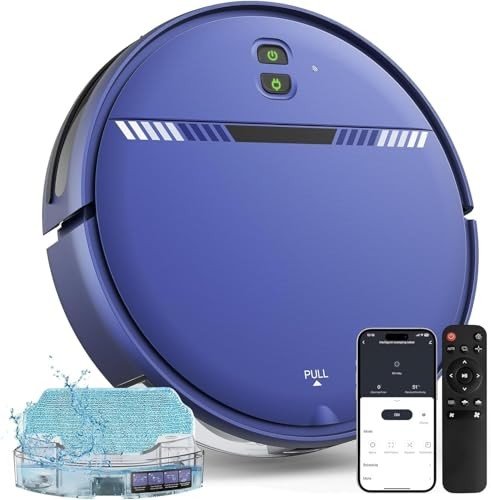The Rise of Robot Vacuum Cleaners in Industrial Settings
In the last few years, the landscape of industrial cleaning has experienced a significant transformation with the introduction of robot vacuum. These automated gadgets are not just a novelty for homes; they have actually acquired traction in storage facilities, making plants, and other industrial environments. This post checks out the performance, benefits, and considerations of robot vacuum cleaners within the industrial context, while answering some often asked questions.
What are Robot Vacuum Cleaners?
Robot vacuum cleaners are automated cleaning devices geared up with sophisticated sensors and innovation that enable them to navigate around spaces, identify dirt, and vacuum surface areas without direct human intervention. In industrial settings, they are designed to handle a variety of debris types, help with regular cleaning schedules, and improve overall operational efficiency.
Table 1: Key Features of Industrial Robot Vacuum Cleaners
| Feature | Description |
|---|---|
| Navigation | Utilizes LiDAR or camera-based navigation for precise mapping. |
| Size and Design | Compact and robust style to suit tight areas and hold up against hard environments. |
| Self-Charging | Instantly go back to its docking station for recharging. |
| Dustbin Capacity | Larger dustbin matched for industrial particles sizes and volumes. |
| Programs | Can be set for scheduling and particular cleaning tasks. |
| Information Collecting | Geared up with sensing units to collect data for upkeep and cleaning analysis. |
Advantages of Robot Vacuum Cleaners in Industrial Settings
The adoption of robot vacuum comes with a myriad of advantages:
Increased Efficiency:
- 24/7 Operation: Unlike human cleaners, robots can run around the clock, contributing to constant tidiness without downtime.
- Time-Saving: Automated cleaning allows workers to concentrate on core jobs instead of cleaning duties.
Expense Savings:
- Labor Costs: Maintaining a robot vacuum can minimize the requirement for a large cleaning personnel, reducing total labor expenses.
- Functional Efficiency: With enhanced cleanliness and reduced downtime due to maintenance issues, companies can minimize functional expenses.
Improved Safety:
- Reduced Risk: By decreasing the human involvement in hazardous cleaning environments, the danger of accidents is decreased.
- Constant Cleaning: Robot vacuums guarantee that locations are regularly cleaned, decreasing slip threats and unhealthy environments.
Increased Flexibility:
- Customizable Cleaning Routes: These devices can be programmed to tidy particular areas or floors, adapting to altering industrial designs.
- Range of Surfaces: Industrial robot vacuums can manage different floor covering types, from concrete to tiles, making them flexible.
Ecological Impact:
- Sustainable Cleaning Solutions: Many models use minimal water and eco-friendly cleaning services, helping in corporate sustainability efforts.
Table 2: Industrial Applications of Robot Vacuum Cleaners
| Industry | Application |
|---|---|
| Production | Cleaning production lines and assembly areas. |
| Warehousing | Preserving tidy and orderly storage areas. |
| Food Processing | Guaranteeing tidiness in sensitive areas to fulfill hygiene standards. |
| Pharmaceuticals | Maintaining ultra-clean environments for production. |
| Logistics and Distribution | Keeping pathways clear for efficient operation. |
Obstacles and Considerations
While the benefits are considerable, companies need to also consider numerous challenges:
- Initial Investment: The in advance costs of acquiring industrial robot vacuum can be considerable, though long-lasting cost savings may offset this expense.
- Maintenance and Repairs: Regular upkeep is necessary to keep the robotic systems working efficiently, and repair work can incur additional expenses.
- Combination: Businesses may require to integrate these machines into existing workflows, which can need time and adjustment.
- Training and Support: Staff might require training to effectively manage these makers, particularly when repairing or shows is needed.
Frequently Asked Questions About Robot Vacuum Cleaners in Industrial Settings
1. How much do industrial robot vacuum cost?
The expense can range from a couple of thousand to tens of countless dollars, depending upon requirements, functions, and brand.
2. What kinds of surfaces can they clean?
Robot vacuum cleaners appropriate for different surface areas including carpets, tiles, concrete, and even some wooden floorings.
3. How do they navigate complicated industrial environments?
Most industrial robot vacuums make use of sophisticated navigation systems like LiDAR, video cameras, and sensors to map out and adapt to their environments for effective cleaning.
4. Can they clean up large areas without human intervention?
Yes, industrial robot vacuums are designed to tidy substantial locations with pre-programmed paths and schedules, successfully operating autonomously.
5. Are these robots environmentally friendly?
Lots of models focus on effectiveness and reduce water use, making them a more ecologically friendly cleaning alternative compared to standard methods.
The introduction of robot vacuum into industrial environments signifies an exceptional improvement in cleaning technology. With their ability to boost effectiveness, reduce labor costs, and keep security, these automated systems are leading the way for smarter and cleaner industrial operations. While challenges might exist, the long-term benefits and technological developments are encouraging for markets looking for to improve their cleaning procedures. As cleaning robots continues to evolve, we can anticipate additional innovations in robot vacuum cleaners that will transform industrial cleaning practices much more.

